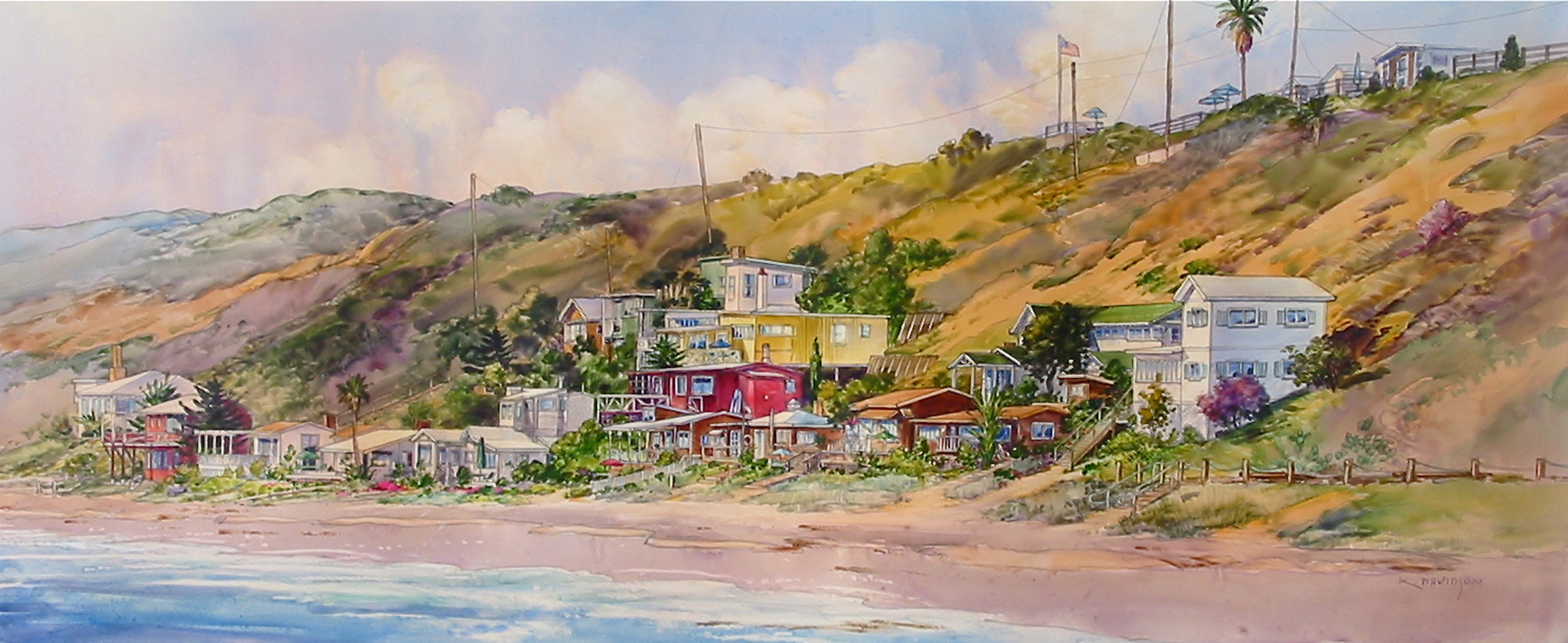When Earth Becomes Art
By Gina Dostler
Art emerges from many mediums. For Brad Mimlitz, dirt is his media. His creativity infuses rammed earth walls, such as the ones he’s erecting on the grounds of the Festival of Arts in Laguna Beach. He feels strongly about playing a role in creating healthier, cleaner environments for his customers. With each wall, he receives satisfaction from watching people’s reaction as they observe, touch and comment about the structures.
Q: What is a rammed earth wall?
A: Rammed earth is soil that is rammed between two wooden forms laid down in multiple layers to create a wall. It is a sustainable way to make buildings using natural raw materials that includes non-organic sands and gravel. The technique dates back thousands of years to China where rammed-earth architectural techniques were used for walls and foundations. But it’s really the technique itself that is unique and creates a long-lasting structure that is truly a work of art.
Q: What makes the technique special?
A: Basically the soil is mixed, placed and compacted repeatedly with a pneumatic rammer to compact it into the final material that resembles very hard sandstone. The material goes into the formwork very dry, and gets compressed down to a specific compaction rate. This technique creates layers and each layer is called a lift. Each lift uses one color mix at a time to create various color tones of compacted (or rammed) earth. This work is labor intensive with each lift rammed by hand so it is very time consuming.
Q: You referred to it as a work of art.
A: The wall is made of earth. You take the middle three letters out of earth and it spells art. The structures we create are just beautiful. The layers that form the wall can be straight lines or sinuous curves and can be made in different shades of one or multiple colors. Picture the side of a cliff, the different tones of earth that make up the layers are recreated in our walls to replicate that strata. Every project is really a creative piece of work. When an earth wall is built, no two walls are ever the same. At times I get to be an artist, an architect or a construction worker. Yet I’m always a perfectionist when it comes to meeting the owner’s or architect’s desire.
Q: What makes modern rammed earth walls different from the ones in ancient China?
A: From the research that has been done, the early structures in China had a high clay base soil, which absorbs moisture, so they used a regional coating over the walls to protect them and added ox blood and straw to the mix. These days we use rebar and cement, which not only provides structural integrity but less clay helps to keep moisture out of the wall. The amount of cement used is about 10 percent. The soil we use is always sourced locally and sometimes contain spoils from the site, so it’s gathered below the topsoil so no organic materials are present in the mix. In cold, wet climates we install rigid insulation inside the walls to create a highly energy efficient, waterproof wall. The walls are also sound and fire proof.
Q: What’s it like being in a rammed earth building?
A: When someone experiences a rammed earth building for the first time, they are forever changed. It has a visceral, clean and substantial feel to it with a fresh smell that is hard to forget. And you get this awesome connection to earth from the natural elements in the walls that leave a sense of permanence. A building could have just one wall made with rammed earth and the difference is still profound. It could also be made into a fireplace, a retaining wall or benches.
Q: Why have a rammed earth building?
A: Besides the artistry, it has great health benefits. Off-gassing from building materials often cause people with multiple sensitivities to become sick. There is nothing in our walls to make anyone sick and no opportunity for mold to grow. The materials that go into the rammed wall are all natural and can be completely recycled with nothing in it to harm the environment. It’s also sustainable because the wooden forms are reused multiple times compared to the amount of lumber needed to build a standard home. And it is very energy efficient because the earth wall absorbs and stores heat to keep the structure warm. The heat is then slowly released it back into the structure when the air cools down inside. The same goes with humidity. The air and temperature are always balanced inside.
Q: How did you find yourself making dirt walls?
A: I’m an architect in Utah and we had a client that saw a rammed earth building and wanted to know if we could do this in the mountains. We looked into it and found most experienced rammed earth builders were located in Australia and were not accustomed to working in a cold and damp climate After analyzing several rammed earth building methods, I decided the reinforced and insulated method offered the best solution for our climate. Sadly though, the client never went through with the project. But during that time, we gained increased interest and started working on more projects and Earth Wall Builders was formed.
Q: You’re working on a project in Laguna Beach right now.
A: Bauer Architects in Newport Beach reached out to us to build walls and benches for part of Laguna’s Festival of Arts renovation project. We are just about finished with our work and are really happy with the results. The walls gently curve, with colors that match the surrounding cliffs. It brings an aesthetic to the project that is simply one of a kind.



